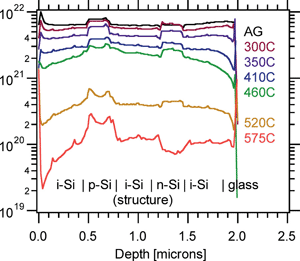SIMS (SECONDARY ION MASS SPECTROMETRY)
Secondary Ion Mass Spectrometry (SIMS)
Secondary Ion Mass Spectrometry (SIMS) is technique used for surface material characterization of a solid specimen. SIMS is recognized as the most sensitive elemental, isotopic and molecular composition analysis the uppermost atomic layers of the specimen. The following are a few strength and limitations of SIMS :
Strengths:
- The analysis consumes very small sample (essentially non-destructive).
- High sensitivity means that specimens with low concentration levels (down to Parts Per Billion levels) can be analyzed with SIMS.
- High sensitivity also allows for depth profiling of molecular and elemental abundances as well as isotopic ratios.
- SIn situ analysis eliminates the need for complex sample preparation in most cases.
Limitations:
- Because both atomic and molecular species are produced during sputtering of the samples, not all elements in all substrates (matrices) can be analyzed quantitatively.
Typical Applications:
- Measuring quantitative depth profiling of dopants and impurities in semiconductor substrates.
- Identifying lubricants on magnetic hard discs.
- Profiling thickness of insulating films on glass.
- Mapping elemental and molecular patterned surfaces.
- Identifying compounds in thin organic films.
- Determining the extent of crosslinking in polymers.

i-v curve analysis • ic decapsulation service • Counterfeit Component Authenticity • Cross Section Analysis • Parallel Lapping • Energy Dispersive X-Ray Spectroscopy • Focused Ion Beam • optical microscopy failure analysis • Photoemission microscopy failure analysis • Scanning Acoustic Microscopy • electron microscope services • IC X-Ray services


